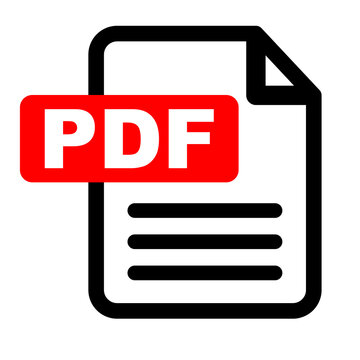Call Monday-Friday 9am - 6pm Closed Saturday & Sunday



[ Contact Us ]
Need Help? Calling from a mobile please call 0151 647 7556
0800 195 4926Do you have a question? or need help?
Call Monday-Friday 9am - 6pm Closed Saturday & Sunday,
If you’re new to GAP Insurance, this guide is designed to take you through the basics step by step. We’ll explain what GAP Insurance is, why people buy it, the types of cover available, and how much it usually costs in the UK.
For a quick definition, visit our dedicated page: What is GAP Insurance?
If you are looking for more in-depth information, you are in the right place here.
GAP Insurance (short for Guaranteed Asset Protection) is designed to protect you from the financial shortfall that can happen if your car is written off or stolen.
Effectively, GAP Insurance is an additional layer of financial protection that can add to your motor insurance settlement if your vehicle is written off following a fire, flood, accident or theft. Your motor insurance should provide you with a market value settlement to cover the cost of replacing the car, like-for-like, with the same age and mileage model at the time of your claim.
Whilst this market value settlement may cover the cost of the vehicle you have just lost, it could still leave you with:
Here’s a simple example of how a write-off or theft could impact your finances:
You buy a new car for £30,000.
Two years later, it’s written off in an accident.
Your motor insurer pays the car’s market value at the time of the claim, say £20,000.
That leaves you with a £10,000 'gap' between what you paid and what your insurer gives you.
You may have outstanding finance that is not cleared by the £20,000 from the motor insurance payout (say you still owe £22,000).
The cost of an equivalent new car could now be higher, say £34,000.
A GAP Insurance policy can top up the motor insurance settlement. Depending on the type of GAP cover, it can:
Return you to the original invoice price,
Cover the outstanding finance or lease balance, or
Pay the cost of replacing the car with a like-for-like model (even if prices have risen).
For a deeper dive into each option, see our guides on Types of GAP Insurance - explained in a simple guide.
The question of whether GAP Insurance is worth it for you really comes down to how much you feel you may be impacted financially if your car were written off or stolen.
In owning a vehicle, some things are almost universally true:
However, there are certain circumstances where GAP Insurance may be more useful than others.
When GAP Insurance can be most useful:
New or nearly new cars (faster depreciation).
Cars bought on finance, PCP, or lease.
High-value or specialist models.
When vehicle replacement costs have increased since you purchased your car.
Conversely, there are times when GAP Insurance may be less critical:
When you may not need it:
Older, lower-value cars may depreciate at a slower rate.
You don't mind buying an older and/or less expensive alternative vehicle.
You have the cash reserves to purchase a newer car.
You only intend to own the vehicle for a short period.
For more of the pros and cons of GAP Insurance, see our full guide at GAP Insurance: Is it worth it?
The premium for GAP Insurance is typically a one-time payment or a small monthly fee, calculated based on factors such as the vehicle's age, value, and the type of policy you choose. The policy premium will increase for the higher and longer cover levels available.
What cover levels are available? How would GAP Insurance work?
You may have already been offered GAP Insurance by your dealership or an online GAP insurance provider. The most common coverage offered is a Return to Invoice GAP Insurance policy. However, another level may be more suitable for you and your new car. You will be pleased to know that with our system, the levels of GAP cover you are not eligible for will be filtered out during your GAP Insurance quote.
If the unfortunate event does occur and your vehicle is declared a total loss, the three main types of GAP insurance policies available are:
Contract Hire GAP Insurance / Lease GAP Insurance
This GAP Insurance cover is designed to pay the difference between your motor insurance market value settlement and the amount outstanding on your lease/contract hire agreement or loan amount. (Please remember that late payment charges and arrears are not covered and will be deducted from any GAP insurance settlement.)
Return to Invoice GAP Insurance (RTI)
An RTI GAP insurance policy is designed to pay the difference between what your comprehensive insurance values the car to be worth on the day of the total loss and the higher of the invoice price you have paid or the amount outstanding on your finance.
Combined Vehicle Replacement GAP Insurance (VRI)
This is quite similar to Return to Invoice GAP insurance. Like an RTI, a VRI GAP Insurance policy is designed to cover the higher of the invoice price you have paid or the amount outstanding on any finance agreement. However, this level of GAP Insurance cover also considers the replacement cost of a replacement vehicle with the same age, mileage, and specifications as the vehicle on the day that you bought it. In other words, it ensures you can replace your vehicle with a similar one, even if the cost has increased since you purchased it.
Consider the potential upside: GAP insurance could work in your favour if your vehicle's replacement cost has increased. In the event of a claim, you could receive a monetary payment that exceeds the vehicle's original purchase price.
Unfortunately, we do not currently offer any form of Agreed Value GAP Insurance or Negative Equity GAP Insurance.
To qualify for GAP Insurance, you must meet specific eligibility requirements, and several factors can determine whether you and your vehicle are eligible for cover.
Here are some of them:
* The price of the vehicle. Some GAP providers will only cover a vehicle if the price is less than a certain amount.
* You must have a fully comprehensive motor insurance policy.
* You do need to be over 18 years old and have a full UK driving licence.
* The types of GAP insurance you are offered may also depend on the age of your vehicle and how many miles it has travelled.
* Most GAP insurance providers need you to have bought the vehicle within a specific timeframe.
* The vehicle must have been bought from a VAT-registered garage or a main dealership.
* Most vehicles will qualify for GAP, but some Manufacturers/Models will not be eligible.
For a personalised quotation and help exploring what a GAP insurance policy can do for you, why not click for an automated quotation?
What are the rough costs?
Prices are mainly determined by the qualifying questions you are asked when getting a quote, and the years of cover impact the cost.
If you get another vehicle, can you transfer your current policy to your new one?
This is possible, but it is subject to eligibility. Some insurers do give you a free transfer, and then they may charge for subsequent transfers.
Can I extend the length of my policy after I have bought it?
Most GAP policies start on the day you buy them and finish on the specified end date. GAP Insurance is generally available within the first 180 days of vehicle ownership (sometimes up to 365. T&Cs apply). After this point, you would have owned the vehicle too long to be eligible for further cover.
GAP Insurance products have existed since the 1980s. It originated in the United States and was designed to protect consumers from the financial GAP that could occur if their car was declared a total loss. GAP insurance was developed to address the issue of vehicles rapidly depreciating, leaving owners at risk of owing more on their car loan than the car was worth if it was totalled in an accident.
GAP insurance gained popularity as car finance terms lengthened and vehicle depreciation outpaced repayments. This insurance product became particularly relevant for individuals buying or leasing new cars or cars with long loan terms. GAP insurance was initially offered primarily by car dealerships and finance companies, but it has since become more widely available through insurance companies as well.
The coverage provided by GAP insurance helps bridge the shortfall between the market value of a vehicle when written off and the outstanding finance balance or lease or, with more modern levels of GAP cover, the invoice or replacement cost. This ensures that the policyholder is kept from being exposed to the remaining balance of their finance agreement, lease, or out-of-pocket in case of a total loss.
Over time, GAP insurance has moved from car dealers and has not just evolved, but it has adapted to offer different coverage options such as return to invoice and combined vehicle replacement insurance, catering to the varying needs of car owners. With the increasing awareness of the potential financial risks associated with car ownership, GAP insurance has become an important consideration for many car buyers, providing them with peace of mind and financial protection.
The obvious question is, 'Which GAP cover is best for me?' Unfortunately, it depends on several factors:
Please remember that before you buy any form of GAP insurance, we recommend that you make sure that the GAP insurance provider you are buying your policy from is regulated by the Financial Conduct Authority.(FCA)
Contract/Lease Hire GAP Insurance from TLG
 Total Loss IPID From June 2024
Total Loss IPID From June 2024  Total Loss Contract Hire From June 2024
Total Loss Contract Hire From June 2024
Combined Return to Invoice GAP Insurance from TLG
 Total Loss IPID From June 2024
Total Loss IPID From June 2024  Total Loss Return to Invoice From June 2024
Total Loss Return to Invoice From June 2024
Vehicle Replacement GAP Insurance from TLG
 Total Loss IPID From June 2024
Total Loss IPID From June 2024  Total Loss VRI GAP From June 2024
Total Loss VRI GAP From June 2024
If you have any questions, please contact the office on 0800 195 4926, and our advisors will be happy to help.
If you are considering buying GAP Insurance from Total Loss GAP, why not click for a Total Loss GAP Insurance quote and see how much a policy will cost?